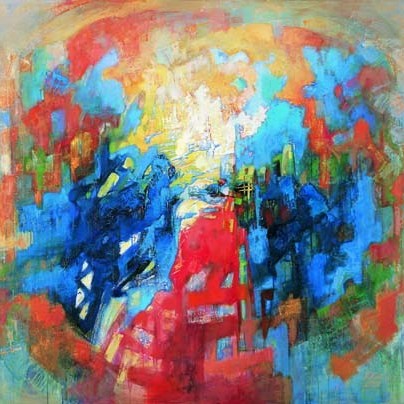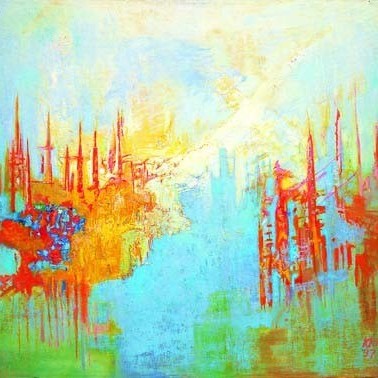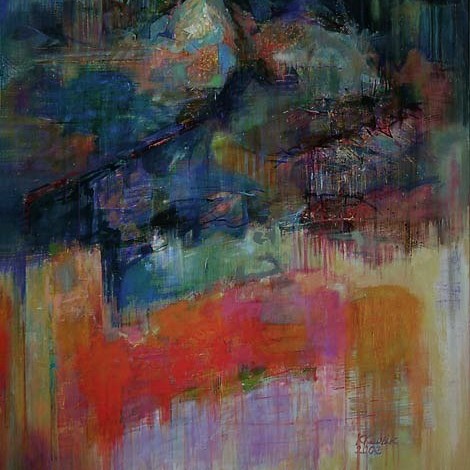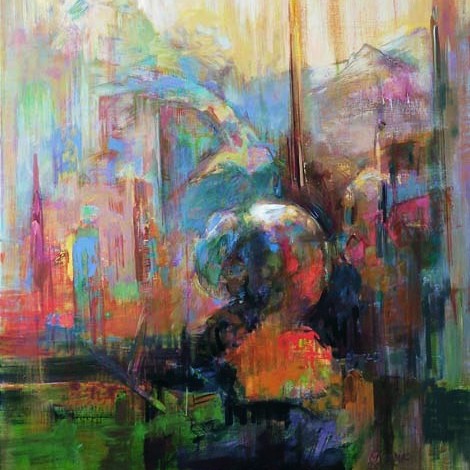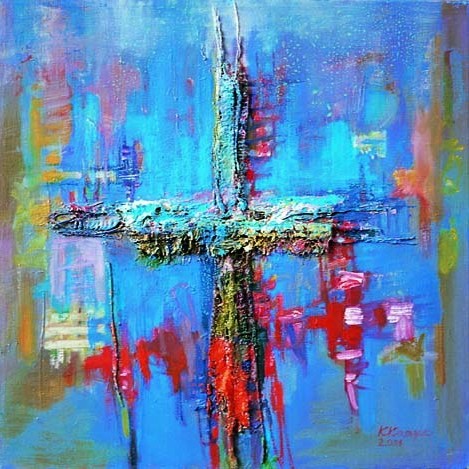The creative path of Kristiina Kaasik has by today taken several important turns. If we switch in the reverse gear and back up a little with out interpretation machine, then we can see that this path is not so very curvy and the bends are rather smoother than steeper. Quite soon we reach the turn from where can already be seen the beginning – the moment Kaasik becomes more widely known at the first half of the 1960ies. She joins the group ANK’64 – a body of friends with a strange name, but with an original handwriting. Later it is said that it was ANK, which was one of the pathfinders of the artistic innovations of the 1960ies, that it was them, who tried to wipe from art the requirement of depicting of the social dream reality and dive into the artistic sphere. Because what would happen to an artist, when he is forced to create by books? Do you happen to have a hunch, what would happen, if his eyes are being picked?
Kaasik most probably has never fitted the requirement, according to which art must solve problems, which have been placed outside its borders. Well, for instance having asked why the brick production has decreased or protested against populistic educational policy. Instead Kaasik turned to nature – to the place where often go such artists who have the wish to go into hiding, when they want to step aside. Landscapes by Kaasik from that period are exactly like that – they give no signs of the presence of man, there can be found no litter or broken branches of trees. There the nature is depicted in its intact (and this means unspoilt) manner. It may feel as if after accomplishing of these paintings Kaasik has changed her handwriting a lot, but actually the present exhibition and landscapes could be just two sides of one aspiration.
It seems that when earlier Kaasik searched for sincere and clean environment from the nature, then in the course of time she has let art itself lead herself astray – with its clean colours and forms, which have no connection whatsoever with the depicted objects. There exists no conceptual difference, whether we see a spring or just abstract blue colour – in both cases we may assume that the artist is telling us of looking for a hideaway, of detachment, leaving, self-absorption. This has nothing to do with hatred or offence – we see no unexpected colours, frantic forms, banned headings. Kaasik is just going. Into the nature. Into the colour. Anyway she is leaving to the place which can not be reached by the fumes of the daily environment.
One could also subtilize about how photography and film have already a long time ago taken over the storytelling function of painting and therefore the latter has no other possibility than to continue dealing with itself, i.e. with pure art. Still, such conclusion is obviously too limited. Yes, people often have problems with “reading” of abstract art – what textbook to use, which alphabet to memorize, whose grammar to implement and which story is being told. But sometimes the story is about telling the story itself. Abstract art does not always “mean” something – its existence is sufficient to tell us:
“But when we reach the Moon, there exist machines which can revive you.”
.png)
